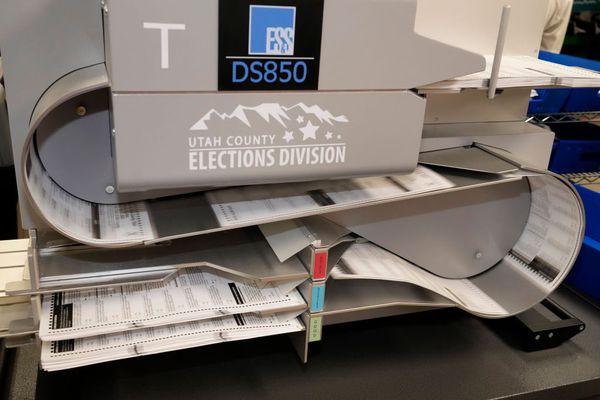
Rivian Automotive (NASDAQ:RIVN) shares declined on Wednesday after the electric vehicle manufacturer posted mixed second-quarter results and issued a downbeat outlook, prompting a round of price target cuts from Wall Street analysts.
The company reported second-quarter revenue of $1.303 billion, a 5.1% year-over-year increase that slightly surpassed the Street consensus estimate of $1.29 billion, according to Benzinga Pro.
However, the adjusted loss of 97 cents per share came in wider than the expected 76 cents per share loss, underscoring continued profitability challenges.
Also Read: Rivian Gains On Tesla’s Robotaxi Hype, But Challenges Loom
In response to the earnings, Wedbush analyst Daniel Ives maintained Rivian with an Outperform rating and lowered the price forecast from $18 to $16.
While revenues modestly exceeded expectations, driven by higher average selling prices and growth in the software and services segment, profitability deteriorated.
Software and services revenue rose to $376 million, up from $318 million in the prior quarter, with approximately $182 million stemming from Rivian’s joint venture with Volkswagen (OTC:VWAGY).
However, adjusted gross margin fell steeply to 4.9%, down from 26.5% in the previous quarter, primarily due to lower production volumes and roughly $137 million in fixed cost impacts. Tariffs had only a minor impact during the period.
Adjusted EBITDA came in at a loss of $667 million, significantly wider than the Street’s anticipated $492.7 million loss, as the company ramped up investment in its R2 product line and service infrastructure.
Rivian reaffirmed its full-year delivery guidance of 40,000 to 46,000 vehicles but downgraded its profitability outlook. The company now expects gross profit to be roughly breakeven, down from a prior forecast of $300 million.
This change is primarily due to recent regulatory changes that have created a net negative impact of a couple thousand dollars per unit.
A major part of this loss comes from the elimination of a high-margin revenue stream: $160.0 million in regulatory credits that the company was previously expecting to earn. Adjusted EBITDA guidance was revised to a range of negative $2.25 billion to $2.0 billion, well below the consensus estimate of negative $1.88 billion.
Despite short-term challenges, Ives maintained an Outperform rating, while lowering the price forecast, citing regulatory uncertainty, tariffs, and macro headwinds as near-term hurdles in Rivian’s broader transformation.
JP Morgan analyst Ryan Brinkman took a more pessimistic view, reaffirming an Underweight rating and cutting his price forecast from $10 to $9. Brinkman lowered his estimates and price forecast on Rivian following a wider-than-expected second-quarter EBITDA loss and a deeper full-year guide-down.
While revenue of $1.303 billion beat JPMorgan’s $1.211 billion estimate and the Street’s $1.283 billion, nearly all other metrics disappointed. Regulatory credit revenue came in at just $3 million, well below Brinkman’s $107 million forecast, due to legislative changes that reduced demand for EPA and CAFE credits.
Core automotive gross margin excluding credits fell sharply to -36%, compared to JPMorgan’s -11% estimate, leading to a combined gross profit loss of $335 million versus the firm’s projected $90 million loss.
Software and services showed relative strength, posting a gross profit of $129 million versus the expected $75 million, while operating expenses were lower than anticipated at $908 million.
Despite these positives, the second-quarter EBITDA loss of $667 million fell far short of JPMorgan’s forecast of $535 million and consensus of $493 million.
Brinkman sees Rivian’s updated full-year outlook, now forecasting an adjusted EBITDA loss of $2.125 billion at the midpoint (down from $1.8 billion prior) and regulatory credit revenue of $160 million (cut from $300 million), as indicative of both a more challenging regulatory environment and weaker internal execution.
He projects a $2.8 billion free cash outflow for 2025, up from $2.5 billion, equating to over 50% of estimated revenue and 20% of Rivian’s market cap.
While liquidity remains sufficient with $7.5 billion in cash and expected inflows from Volkswagen and DOE loans, Brinkman reaffirmed an Underweight rating and cut his price forecast.
Price Action: Rivian shares are trading lower by 3.16% at $11.79 at last check on Wednesday.
Read Next:
Photo via Shutterstock







